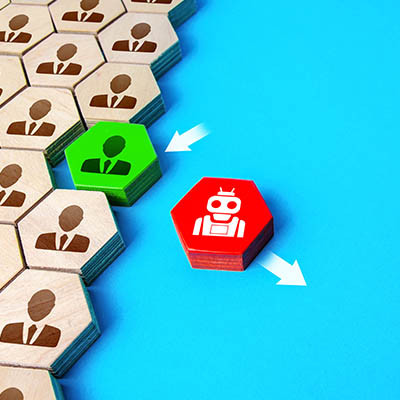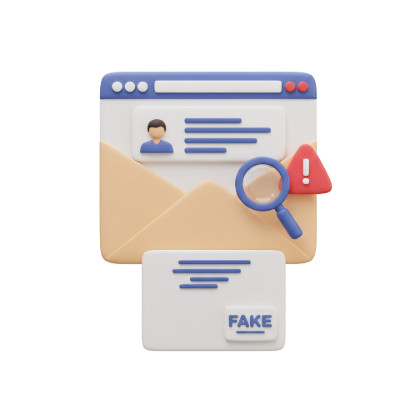One of the core responsibilities of a manager is to get the best work done efficiently. It's not just about delegating; it's about strategic assignment. It is often the key to unlocking both peak employee performance and maximum return on the company's dollar. Poorly assigned tasks can lead to confusion, rework, burnout, and wasted time. This month, we thought we’d share our proven framework for assigning tasks that truly get the most out of your employees' time and the company's money.
Datalyst Blog
The way businesses protect their computer networks has changed. Now, every device connected to the network—like computers, phones, servers, and smart gadgets—is a crucial point of defense. This means that each device can be a weak spot if not properly secured.
If you don't use the same security rules for all devices, you're creating an easy target for cyberattacks.
Small and medium-sized businesses are continuously grappling with the complexities of their supply chain. If you're trying to compete with industry giants, the right technology is more accessible and affordable than ever. This month, we will go into some of the ways you can make your supply chain more efficient.
Many business owners, especially those running small or medium-sized enterprises and even startups, often wonder if their company is big enough to justify investing in managed IT services. The common misconception is that outsourced IT support is only for larger businesses with complex networks and hundreds of employees. The fact is that there is no minimum size a business must reach to significantly benefit from managed IT services.
These are turbulent times. Social media is an undeniable force in our modern lives, for the good and the bad. Anyone that has gotten into a discussion on their favorite social service knows how it can escalate very quickly. Navigating these digital mediums with intention is key to making it a positive and productive part of your life.
In this month’s newsletter, we wanted to roll out some pretty simple social media tips to live by, helping you to build a healthier and more meaningful online presence.
When you send an email internally, the basic expectation is that it'll be read and addressed. However, in the chaotic environment of a busy business—especially for smaller teams juggling an immense workload—emails can, and do, slip through the cracks. If your team relies primarily on email for communication, a reliable email archiving system is a necessity to prevent lost messages from creating a disaster.
We've all been there. You're trying to quickly find that one photo from your vacation, or that important PDF for work, and you end up endlessly scrolling through a digital wasteland of screenshots, random downloads, and duplicates. Our smartphones have become extensions of ourselves, but without proper care, they can quickly turn into cluttered, inefficient tools that cause more frustration than they solve.
The Internet of Things is not a futuristic concept; it's a fundamental part of many modern businesses. IoT devices generate a wealth of data that can be used in several ways. Unfortunately, deploying IoT devices isn't enough. To get the most out of your IoT investments and ensure a strong ROI, you need a smart, strategic approach. Here are the best strategies businesses can use to get the most out of their IoT investments.
Business owners like to talk about things like time theft and quiet quitting as reasons why they wring their hands over lost productivity, and unfortunately, it’s almost always their view that it is the erosion of a strong work ethic. What if the real problem isn't about employees checking out, but rather, something far more on the nose? Let’s talk about quiet cracking.
Quiet cracking is the slow, almost imperceptible breakdown of a knowledge worker's mental and emotional state under the relentless pressure of the demands of their workplace. It's not a sudden burnout, but a gradual fragmentation of their well-being, and it’s happening a lot.
Any business can face a variety of disruptions, from natural disasters to cyberattacks. While many organizations understand the importance of preparing for the unexpected, not all of them have a solid plan in place. A well-crafted business continuity plan (BCP) is crucial for protecting your employees, customers, and bottom line.
Here are some key dos and don'ts to consider when creating your business continuity strategy.
From online banking and shopping to social media and remote work, we're constantly sharing information. While our digital lives offer incredible convenience, they also expose us to a growing number of cyberthreats.
Cybercriminals are always looking for new ways to exploit vulnerabilities and steal personal information. Fortunately, by adopting a few key habits, you can significantly reduce your risk and protect your data. Here are four things every user needs to remember to help them avoid cyberthreats.
Do you feel like you’re walking a tightrope between getting things done and maintaining the security of your network and data? You’re not alone. Ultimately, we’re all trying to be as productive as possible, and we want to use all the cool collaboration tools, work from anywhere, and get things done fast.
Do you have that one friend who's still clinging to their cracked, ancient smartphone? You know the one: it's painfully slow, the battery dies in two hours, and it can't run half the apps you use. Now, imagine if an entire company operated like that, with every piece of its technology. It sounds like a comedy of errors, but for many businesses, it’s a silent disaster waiting to happen.
The end of Windows 10 support is closer than you think. On October 14, 2025, Microsoft will officially stop providing free security updates, non-security updates, and assisted support for Windows 10. For businesses, this isn't just a minor inconvenience—it's a critical security and operational risk that demands immediate attention.
Artificial Intelligence (AI) has become a seriously hot topic. While integrating AI promises significant advancements and efficiencies, the narrative around AI-fueled layoffs—the displacement of human workers by AI—is increasingly met with a surprising twist: regret.
At Datalyst, a leading provider of proactive business technology support services, we've observed this trend with interest. It appears that many organizations that hastily replaced human capital with AI are now confronting unforeseen challenges. Managers that famously thought that replacing their paid employees with AI aren’t always happy with the results. Let’s take a look at the particulars of this phenomenon.
Today, few topics are generating as much buzz right now as Artificial Intelligence. It's a concept that can feel both futuristic and, at times, a little intimidating. What if I told you that AI is already working behind the scenes in many businesses, acting as the most efficient, data-driven coworker you've ever had?
In business, it’s tempting to think, if it's not broken, don't fix it. This is especially true for technology. Your computers turn on, emails go out, and things seem to work… so why bother with constant maintenance?
What if I told you this safe approach is actually draining your profits? It’s a hidden expense, and understanding it can completely change how you see your IT.




















